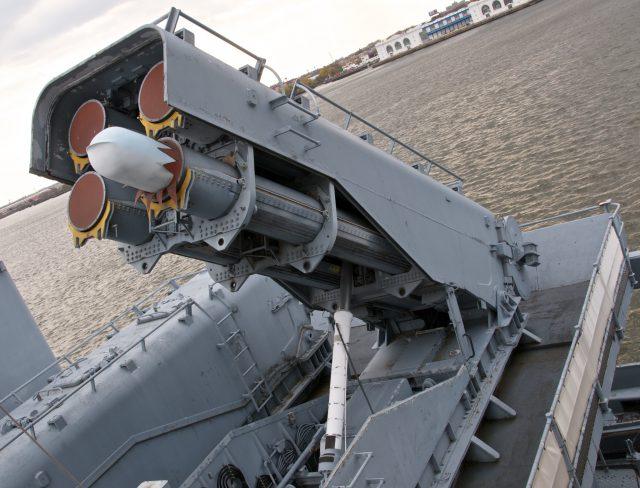The US Nuclear Posture Review: all quiet on the eastern front
Posted By Rod Lyon on February 7, 2018 @ 14:30
The Trump administration’s Nuclear Posture Review [1] (NPR) has received mixed reviews. Some see it as a dramatic move away from a long-term US policy of reducing the size and salience of its nuclear arsenal, and a commitment to a long-term nuclear competition—the German foreign minister calls it an ‘arms race [2]’—with Russia and China. Others insist that the document represents a throwback to the days of the Cold War [3]—and we can count the Chinese foreign ministry [4] among the supporters of that line. The Washington Post’s editorial board decries Trump’s request for even more nuclear weapons as ‘flawed overkill [5]’. And many argue that Trump is lowering the threshold for nuclear use, some claiming that new low-yield nuclear warheads constitute a ‘gateway drug for nuclear war [6]’.
In contrast, administration officials, when launching the document, went out of their way to emphasise the elements of continuity between this NPR and its predecessors. The Obama administration’s negative security assurance—that the US won’t use or threaten to use nuclear weapons against non-nuclear-weapon states that are in good standing with their NPT obligations—remains unchanged. The threshold for US nuclear use, similarly, remains unchanged. The bulk of the strategic modernisation program is the one sketched out in the final years of the Obama presidency. Even the aggregate size of the arsenal seems unlikely to grow much. The new low-yield warhead for the Trident D5 SLBM will simply entail modifying a small number of existing warheads. And, at this stage, the proposed new sea-launched cruise missile (SLCM) is no more than a gleam in the eye—it’s entirely possible that it’ll never be built.
But, from Australia’s point of view, it’s worth looking more closely at what, if anything, has actually changed in terms of ‘tailoring’ US assurances to its allies and partners in Asia. That means having a look at pages 36–37 of the NPR, in particular at the section called ‘Strengthening deterrence in Asia’.
To anyone reading that text, it’s apparent there’s less change in this NPR than some are suggesting. Much of the section is devoted to the several ways in which the Asian strategic environment is different from the European one, and therefore that the US nuclear posture in the two regions is also different. In Asia, there are no forward-deployed nuclear weapons, nor any dual-capable aircraft of the sort based in Europe under existing NATO arrangements. As the NPR states, ‘the United States currently relies almost exclusively on its strategic nuclear capabilities for nuclear deterrence and the assurance of allies in the region’.
The US commits itself to doing four things ‘to maintain credible extended deterrence and thus effective assurance in this complex environment’:
- ‘Maintain integrated, flexible, and adaptable US nuclear and non-nuclear capabilities;
- Continue to invest in missile defenses against North Korean missile threats;
- Demonstrate with allies our joint commitment to deterrence through military exercises; and,
- Work with our allies to improve our shared understanding of nuclear dangers and corresponding deterrence requirements through continued consultative dialogues.’
If we look closely at that list, there’s not a whole lot that’s new in terms of US extended nuclear deterrence and assurance in Asia. The frequency of words like ‘maintain’, ‘continue’ and ‘demonstrate’ underline that simple fact.
Ah, but what about the proposed SLCM, you might ask? Well, that’s a story in itself. Yes, the NPR accepts that the old Tomahawk nuclear-armed SLCMs contributed ‘for decades … to deterrence and the assurance of allies, particularly in Asia’. And it announces a decision ‘to immediately begin efforts to restore this capability by initiating a capability study leading to an Analysis of Alternatives for the rapid development of a modern SLCM’. The language is forbiddingly bureaucratic, true, but the reader is naturally inclined to see a returning SLCM capability as an enhancement of the US posture in Asia.
Later in the document—pages 54–55—the proposed new SLCM is depicted wearing three strategic hats: it’s needed to provide a ‘non-strategic regional presence’; it’s an ‘assured response capability’; and it’s an ‘I[ntermediate-range] N[uclear] F[orces]-Treaty compliant response to Russia’s continuing Treaty violation’. Subsequently, and unhelpfully, the NPR abruptly portrays the US ‘pursuit of a SLCM’ (emphasis added) as an arms-control bargaining chip, something that may spur Moscow into returning to compliance with its arms-control obligations. The text even draws a direct comparison between the proposed SLCM and the Pershing II and ground-launched cruise missiles that NATO built and deployed in the early 1980s, only to trade away in the INF Treaty.
For US allies in Asia, the proposed new SLCM seems unlikely to be the magic bullet that signals a re-energised US nuclear posture in Asia. Indeed, taking the NPR at face value, not much looks likely to change in terms of US extended deterrence and assurance in the region. Rather than going too far, the NPR may not go far enough to ease allied anxieties about the durability and credibility of the US nuclear umbrella. And that means, around the region, some will still press the case for indigenous nuclear arsenals.
Article printed from The Strategist: https://aspistrategist.ru
URL to article: /us-nuclear-posture-review-quiet-eastern-front/
URLs in this post:
[1] Nuclear Posture Review: https://www.defense.gov/News/Special-Reports/0218_npr/
[2] an ‘arms race: https://news.am/eng/news/434663.html
[3] throwback to the days of the Cold War: http://ottawacitizen.com/news/national/defence-watch/new-us-nuclear-weapons-review-a-throwback-to-cold-war-times
[4] Chinese foreign ministry: http://www.xinhuanet.com/english/2018-02/05/c_136951193.htm
[5] flawed overkill: https://www.washingtonpost.com/opinions/trumps-request-for-even-more-nuclear-weapons-is-flawed-overkill/2018/02/03/f962b0b4-083d-11e8-8777-2a059f168dd2_story.html?utm_term=.e47cae7c8277
[6] gateway drug for nuclear war: http://www.defenseone.com/ideas/2018/02/trumps-new-nuclear-policy-hypes-threat-and-bring-war-nearer/145703/
Click here to print.
